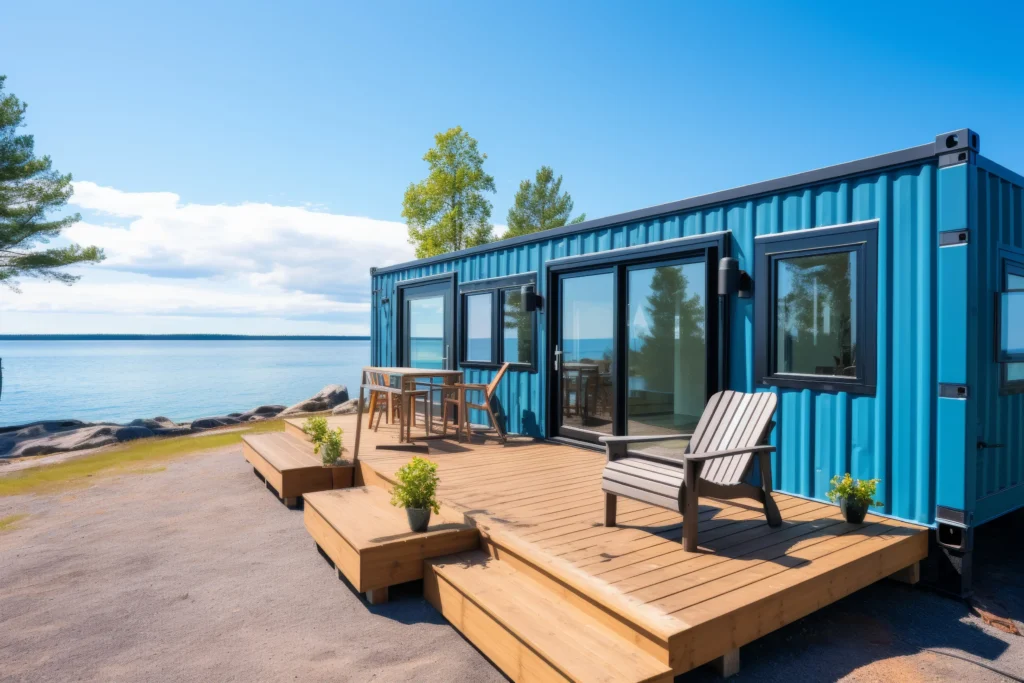Florida is known for sunshine — and severe storms. If you’re considering a shipping container home in Florida, you might be wondering: How well do they handle hurricanes, flooding, heat, and humidity?
Here’s a breakdown of how container homes perform in Florida’s unique climate and what to consider for weather resilience.
Built Tough for Hurricane-Force Winds
Shipping containers are engineered to handle extreme conditions at sea, including violent storms and shifting loads. That same steel construction makes them highly wind-resistant when repurposed as homes.
Strength: The corrugated steel shell offers natural rigidity and structural integrity.
Wind Resistance: With proper anchoring to a reinforced foundation, container homes can resist uplift and lateral wind forces from hurricanes and tropical storms.
Low Profile: Their compact shape and low height reduce exposure to strong wind gusts.
Tip: If you live in a hurricane-prone area, choose a builder familiar with Florida’s wind-load codes and anchoring methods.
Resilient Against Flooding
Flooding is a major concern across many Florida regions — from coastal zones to inland lowlands.
Shipping container homes can be adapted for flood resilience in several ways:
Elevated Design: Homes can be set on piers, pilings, or elevated foundations to avoid floodwaters.
Steel Construction: Unlike traditional materials, containers won’t absorb water, swell, or rot.
Sealability: When professionally modified, containers can be sealed against water intrusion at doors, weld points, and utility penetrations.
Tip: Check FEMA flood zone maps and talk to your builder about foundation height and local elevation requirements.
Insulation for Heat & Humidity
Florida’s hot, humid climate requires smart insulation and ventilation — especially for metal structures like shipping containers.
Here’s how to keep your container home cool and dry:
Spray Foam Insulation: This is the most effective method for thermal regulation and moisture control in container builds.
Ventilation Systems: Proper air circulation prevents condensation and helps manage interior humidity.
Reflective Roofing & Shading: Light-colored coatings and sun-blocking overhangs can drastically reduce heat absorption.
Tip: Ask your builder about HVAC and dehumidifier integration during the design phase.
Fire-Resistant, Pest-Resistant, and Low Maintenance
Florida’s climate isn’t just about storms — long-term durability matters, too.
No Wood = No Termites: Steel structures are naturally resistant to Florida’s most common home-invading pests.
Fire Resistant: The steel exterior offers excellent protection from brush fires or electrical fires.
Low Maintenance: Unlike wood, steel doesn’t warp, rot, or require regular sealing. Occasional exterior coating or rust prevention may be needed, but upkeep is minimal.
Final Thoughts: A Smart Choice for Florida Living
Shipping container homes offer a uniquely strong, weather-resilient solution for Florida homeowners. With proper planning, insulation, and structural anchoring, they can stand up to many of the state’s most intense weather challenges — while offering a modern, eco-conscious way to build.
Whether you’re eyeing a coastal retreat, an off-grid cabin, or a sustainable urban home, container living in Florida can be both safe and smart.
Want to explore container home builders in Florida? [Browse trusted container home contractors in your area →]

